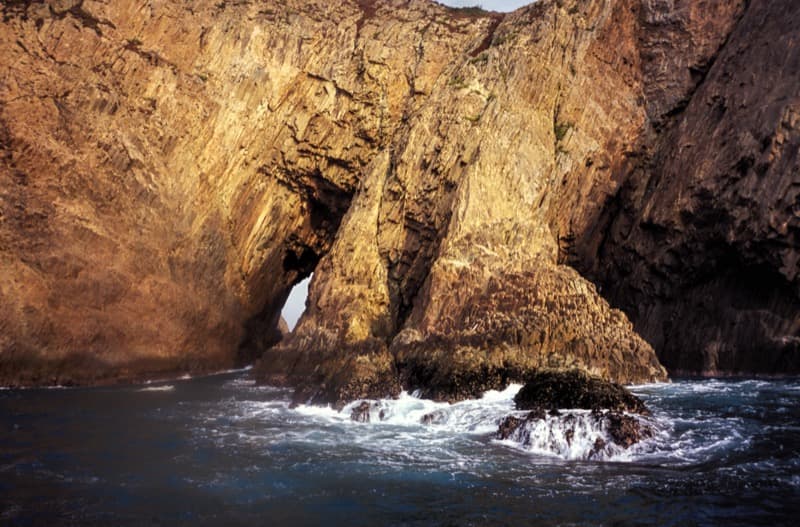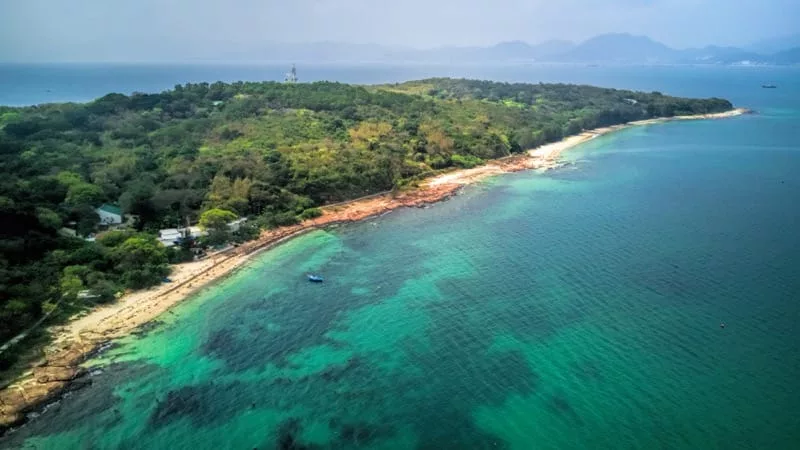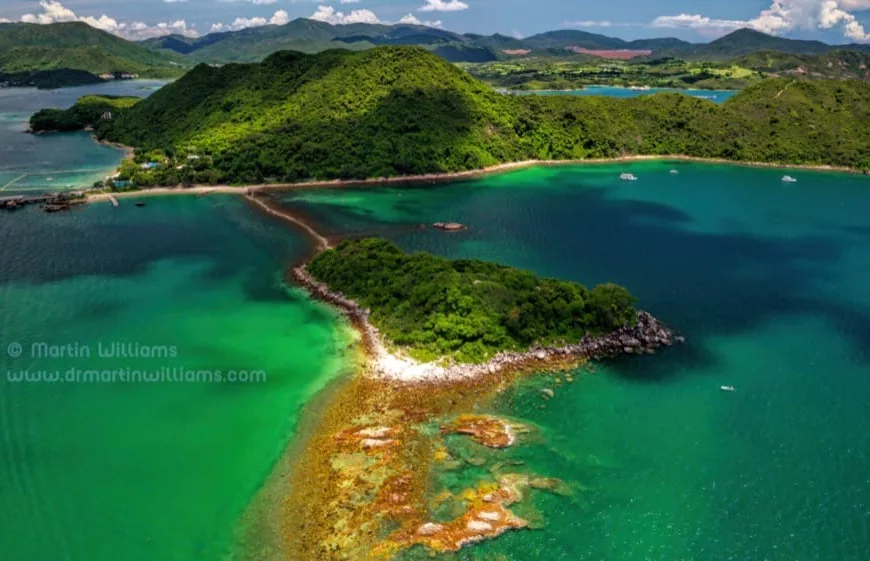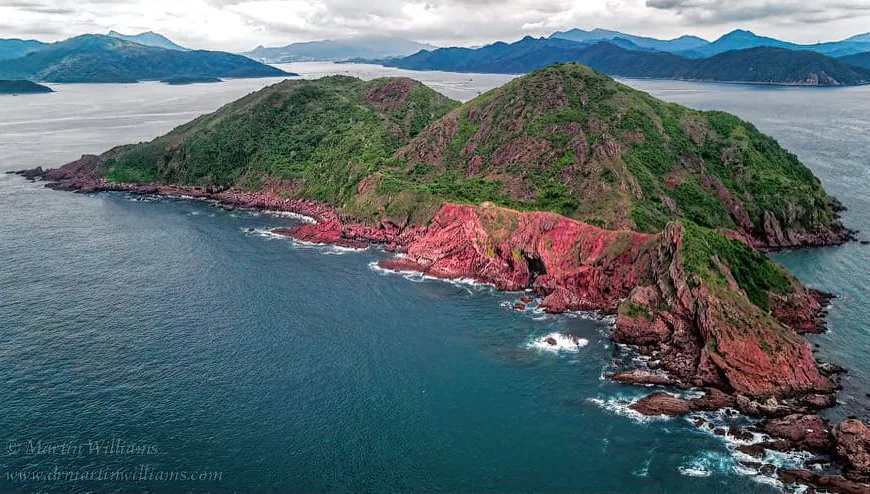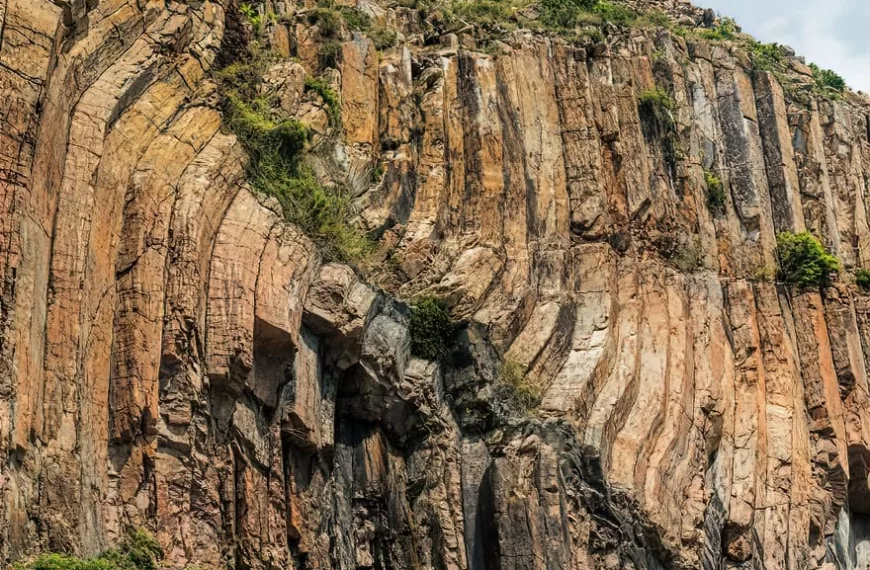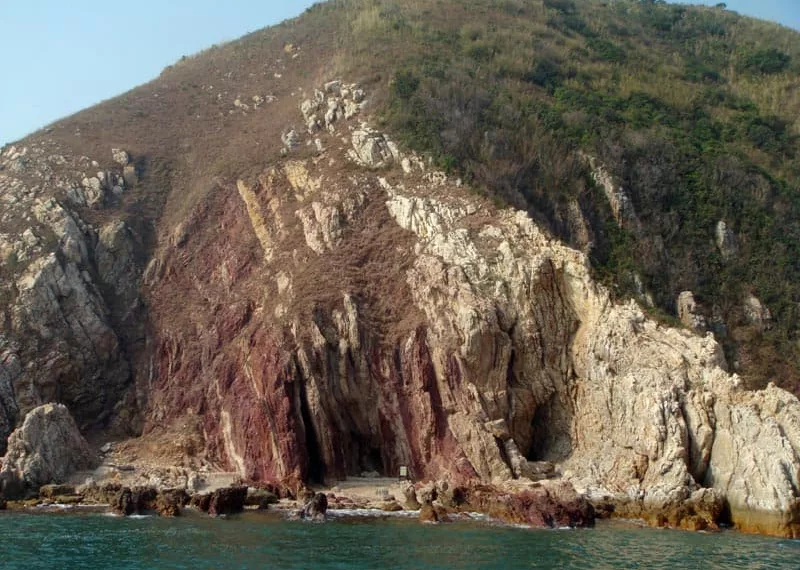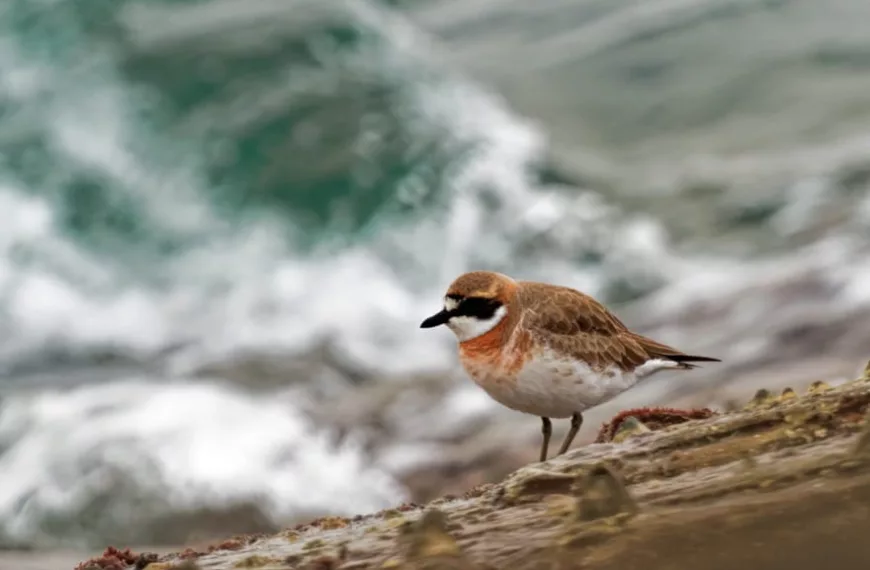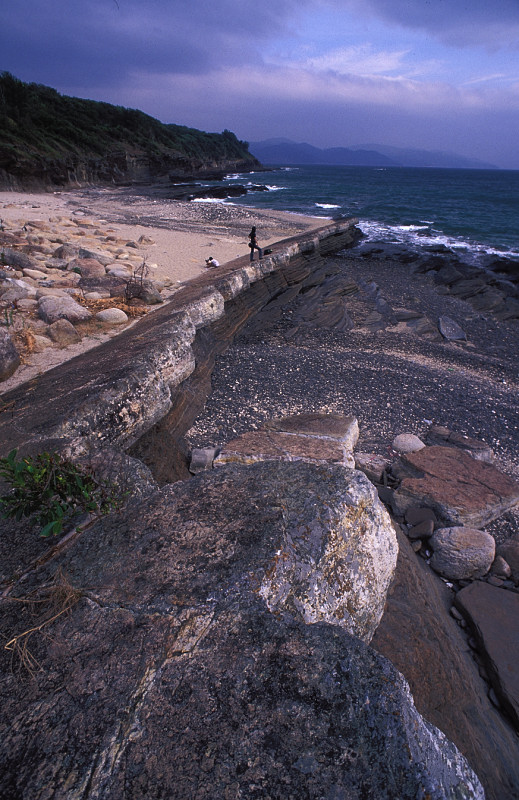Jointed Rock and Fanciful Names
The Ninepin Group (Kwo Chau Islands) – often simply referred to as the Nine Pins – is a cluster of 29 small islands and rocky islets in southeastern Hong Kong. The English name may derive from sailors reckoning the islands looked like bowling pins, or from there being nine main pinnacles. The Chinese name was formerly Kwo Pun Chau – Fruit Platter Islands, as some imaginative people thought they looked like a floating platter of fruit.
Like the Um Kong Group, the islands are formed from tuff that was deposited in the Sai Kung Caldera. In the Ninepin Group, the hexagonal joints in the tuff are wonderfully pronounced, and many of the hexagonal columns are over a metre across.
Also like the Um Kong Group, waves have ripped and hewn the rock to form cliffs, sea caves and arches, and other features. Some of these have stirred the imaginations of people just as much as the group itself – North Ninepin Island has Moon Rock, Hades Rock and Big Stove Rock; on South Ninepin Island there are Backflow Cave, and Thousand-foot Escarpment. The latter is clearly stretching the truth, since South Ninepin Island only rises to a little over 100 metres (330 feet), yet like the other features the precipice is an impressive sight.
There are anchoring points on the north and south Nine Pins, and it’s possible to scramble over rocks and along rough tracks to admire the scenery, including the columns of tuff.
Also, you can test your own imagination: look north towards the Ung Kong Group and the Sai Kung Peninsula, and try to picture the scene 140 million years ago when this whole area was within a collapsed volcano, and the air was filled with incandescent ash, still resounding to the explosions of Hong Kong’s last great eruptions, before the ash settled, and cooled to become the rock we see today.
Migratory Seabirds – Including Nesting Terns
Migratory seabirds are recorded Hong Kong’s southern and eastern waters, but though there is a fair diversity, numbers of individuals tend to be low. Even gulls are hard to find, even though gulls are typical of coastal areas in much of the world.
The most dependable seabirds in these waters are terns that arrive to breed in late spring. Terns are elegant birds, which catch fish by plunging quickly to the water. Three species – Black-naped Tern Sterna sumatrana, Roseate Term S. dougallii and Bridled Tern Onychoprion anaethetus breed in Hong Kong. They form small colonies on islets, including within the Ninepin Group, and greatly enliven the stark rocks.
Terns do, however, suffer from disturbance by people. Anglers may arrive by boat, and climb on islets to then spend hours fishing – scaring anxious adult terns that should be sitting on eggs, or feeding and shading chicks. Casual visitors and even over zealous bird photographers might also disturb the terns.
Passage Migrants
Other seabird species mainly occur as spring and autumn passage migrants, with numbers seen on any day varying with date, and weather. Perhaps the most noteworthy of these is Aleutian Tern O. aleutica.
Aleutian Tern breeds in northeast Asia and the northwest United States, including on the Aleutian Islands within the Bering Strait. Until 1992, this tern was virtually unknown away from its breeding grounds. But in autumn that year, around 190 Aleutian Terns were seen in Hong Kong, and it has since proven to be a regular migrant, chiefly in autumn but with small numbers in spring.
Other migratory seabirds that are occasionally seen here include Long-tailed Skua Stercorarius longicaudus, a handsome bird that flies with the buoyancy of terns, yet is sometimes a pirate: chasing birds like terns that have caught fish, and harrying them until they drop their prey, which the skuas snatch and eat.
Shearwaters – smaller cousins of albatrosses – can also be found, mainly in late April. Like albatrosses, they are masters of flying over ocean waves, using long wings outstretched to ride air currents ahead of the waves, flapping briefly, and languidly tilting to one side as they soar upwards, then dip again to catch another wave. The two main species in Hong Kong are Streaked Shearwater Calonextris leucomelasand Short-tailed Shearwater Puffinus tenuirostris.
More abundant are Red-necked Phalaropes Phalaropus lobatus: small, dainty shorebirds that swim buoyantly, picking up plankton. Their numbers usually peak around the end of March, especially when inclement weather causes many of them to halt their migrations. At such times, there may be thousands of them in Hong Kong waters – and there’s no need to travel as far as the Ninepin Group to find them, as a few individuals might even be seen from the Star Ferry in Victoria Harbour.

